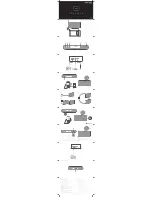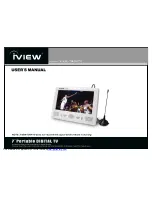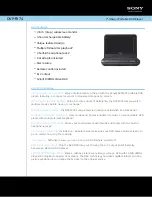
PowerSpout
TRG installation 2018
Last revised July 2018
© 2018 EcoInnovation Ltd (NZ)
Page 8
1.3.1.
Electrical hazards
Protect the supply cable in conduit as per local wiring rules, ensure wiring, insulation,
conductors and routing of all wires of the equipment is suitable for the electrical, mechanical,
thermal and environmental conditions of use. Finger-tighten all cable glands to secure the
supply cable.
Shock hazards
DC voltage from turbines is volatile, and can reach three times higher than the
rated operating voltage under some conditions. Controllers and inverters
contain capacitors that can store and deliver lethal voltages through wiring.
All exposed wiring and connections must be inaccessible. Covers may only be removed
when the turbine is stopped and a suitable time has elapsed for capacitor discharge.
This Class I equipment must be suitably earthed/grounded (turbine bulkhead).
Do not connect a DC pole of the turbine to earth - unless local rules require it.
Provide a suitable DC-rated disconnection device close to the turbine that is clearly labelled.
(A 2-pole DC breaker is the good recommended solution.) In general, hard wiring is
required. However “MC4” type waterproof connectors may be used provided they are never
opened under load. (Turbine must be stopped before unplugging.)
Fire hazards
Wiring must be adequately sized to carry short-circuit current from the turbine (listed on the
identification plate).
Loose connections can cause electric arcs to occur that could ignite flammable materials.
Tighten all electrical connections inside the turbine very securely during installation.
Assess fire risk of the installation site, and if high implement extra fire precautions as
appropriate. In environments where combustible materials are present the turbine must be
mounted in a concrete or metal enclosure. If your hydro turbine is situated in a very dry
bush/forest environment where the fire risk is high, then a ground-fault protection device
(GFPD) should also be installed.
1.3.2.
Lead Acid battery safety
Batteries store energy in chemical form and can release this as electricity very
quickly if there is a short circuit. A short circuit can convert a steel ruler or
spanner to molten metal spray and cause significant personal injury.
Batteries contain explosive gasses that can be ignited by sparks to create an explosion
that scatters sharp debris and acid.
Protection from falling objects is required. Metal objects falling into contact with the
battery terminals could cause a fire.
Never leave a cable loose at one end whilst connected to a battery at the other. It can all
too easy flop against another terminal and strike an arc.
Never disconnect cables from a battery that is being charged/discharged as this creates
a spark.
Batteries give off hydrogen and oxygen gas during charging in the correct proportions
for an explosion. Ventilation of the enclosure is required.
Terminals should be checked annually for tightness and clean if any corrosion is
observed.









































